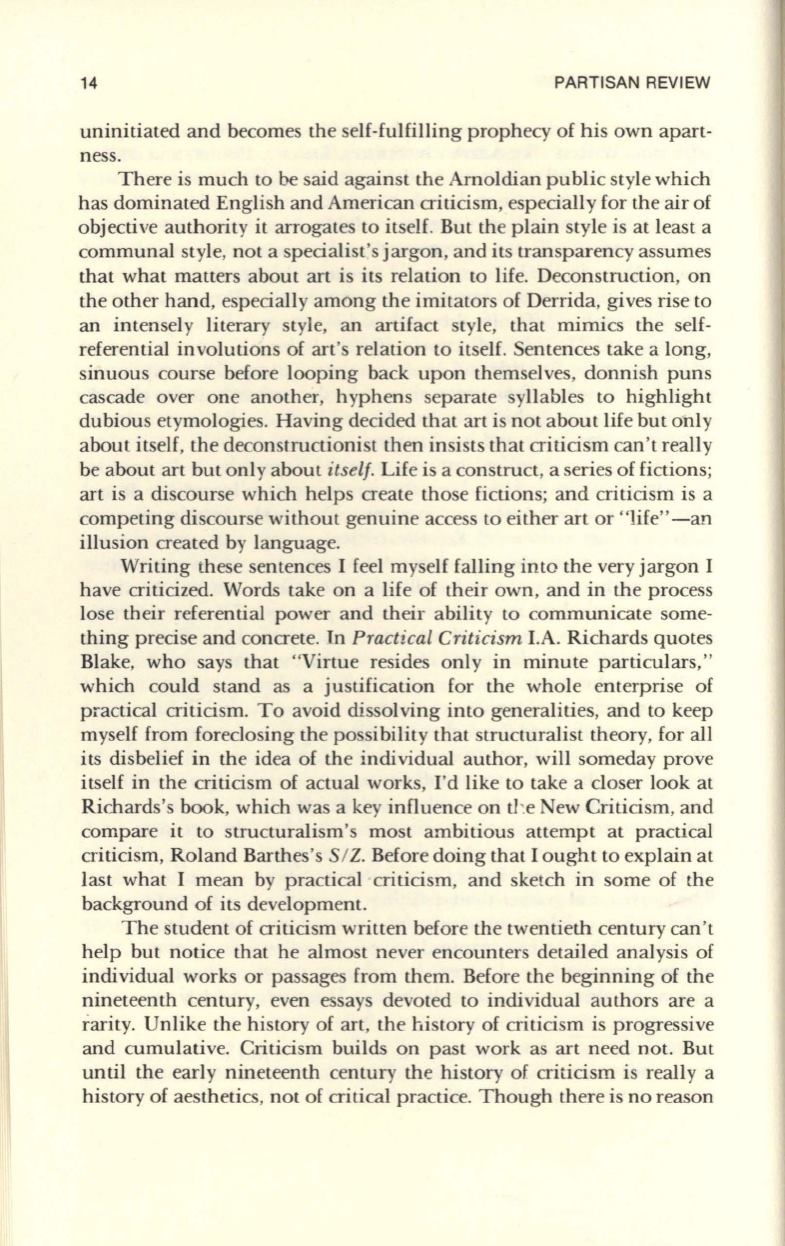
14
PARTISAN REVIEW
uninitiated and becomes the self-fulfilling prophecy of his own apart–
ness.
There is much
to
be said against the Arnoldian public style which
has dominated English and American criticism, especially for the air of
objective authority it arrogates
to
itself. But the plain style is at least a
communal style, not a specialisfs jargon, and its transparency assumes
that what matters about art is its relation to life. Deconstruction, on
the other hand, especially among the imitators of Derrida, gives rise to
an intensely literary style, an artifact style, that mimics the self–
referential involutions of art's relation to itself. Sentences take a long,
sinuous course before looping back upon themselves, donnish puns
cascade over one another, hyphens separate syllables to highlight
dubious etymologies. Having decided that art is not about life but only
about itself, the deconstructionist then insists that criticism can't really
be about art but only about
itself.
Life is a construct, a series of fictions;
art is a discourse which helps create those fictions; and criticism is a
competing discourse without genuine access to either art or "life" -an
illusion created by language.
Writing these sentences I feel myself falling into the very jargon I
have criticized. Words take on a life of their own, and in the process
lose their referential power and their ability to communicate some–
thing precise and concrete. In
Practical Criticism
I.A. Richards quotes
Blake, who says that "Virtue resides only in minute particulars,"
which could stand as a justification for the whole enterprise of
practical criticism. To avoid dissolving into generalities, and to keep
myself from foreclosing the possibility that structuralist theory, for all
its disbelief in the idea of the individual author, will someday prove
itself in the criticism of actual works, I'd like to take a closer look at
Ric..hards's book, which was a key influence on
tl :e
New Criticism, and
compare it
to
structuralism's most ambitious attempt at practical
criticism, Roland Barthes's
SI
Z. Before doing that I ought to explain at
last what I mean by practical criticism, and sketch in some of the
background of its development.
The student of criticism written before the twentieth century can't
help but notice that he almost never encounters detailed analysis of
individual works or passages from them. Before the beginning of the
nineteenth century, even essays devoted
to
individual authors are a
rarity. Unlike the history of art, the history of criticism is progressive
and cumulative. Criticism builds on past work as art need not. But
until the early nineteenth century the history of criticism is really a
history of aesthetics, not of critical practice. Though there is no reason


